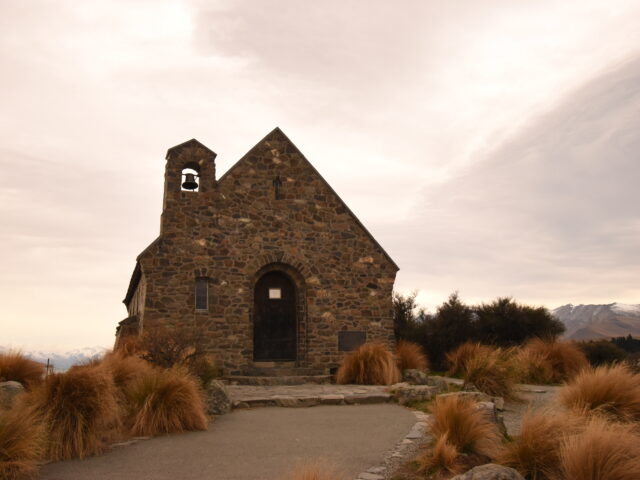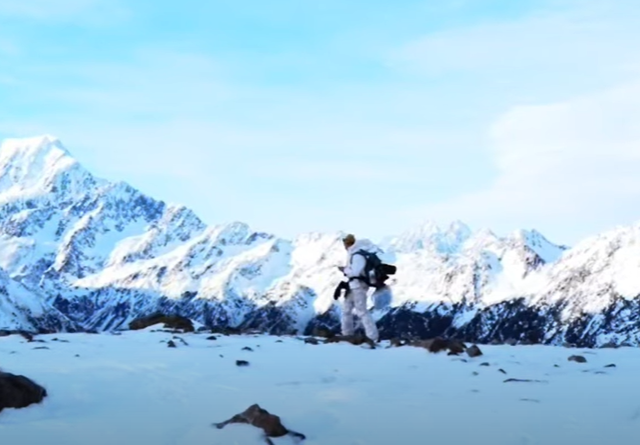1. The Marae is the center of the Maori community
It refers to the meeting grounds of the community, typically a fenced-in area with carved buildings belonging to a specific tribe, or iwi. When I was studying abroad at the Auckland University of Technology, my marae on campus was called Ngā Wai o Horotiu. This was the first place my fellow TEAN friends and I were welcomed to when we arrived on campus. It’s a cultural and spiritual center where I would have lunch every week and hang out with my friends.
2. The Wharenui is the focal point of the marae
It is the communal house in the center of the marae. Everyone gathers here for meetings and celebration. When I entered the wharenui in my marae in Auckland, I felt arms wrapping around me in a welcoming hug. I could feel the family bonds and history of the meeting house represented through the statues of the ancestors on the walls. I felt a sense of community and connection, similar to when I go to Mexico, so I automatically felt at home in the wharenui.

3. poi is a ball attached to a length of string
According to legend, the poi was originally used by men as a training object. It was used to strengthen their wrists and keep the muscles of their arms supple for close combat in times of war. Now, the poi is used to demonstrate grace and femininity. Women of the tribe use the poi to tell a story along with a dance and song.

4. The Haka Can Mean Many Things
The Haka is known as a “War Challenge” or “War Dance” that was performed by men before going into battle. Now the haka is performed to offer thanks, celebrate momentous occasions, offer support, express a cultural exchange of customs and protocols, to motivate oneself before competition, to offer or accept challenges, and to unify a group of people under one cause. There are many versions of the haka, but the most known is “Ka Mate.”
Request Information on New Zealand Programs
5. Pokarekare Ana is a traditional love song
It was written in Maori, around the time World War I began. It is widely popular and is sung throughout New Zealand. In the song, the singer expresses their longing for their lover. They are calling for their lover to come back to them, also expressing how they would die for their lover. It is a beautiful song, one that I have memorized. I sang it with my marae when I was in Auckland. It was a very peaceful experience.
6. Māui-tikitiki- a-taranga is a mischievous demigod

Māui-Tikitiki was cast out to sea in his mother’s topknot. Māui represents the link from gods to ancestors in Māori culture. According to legend, he is said to be stronger than Hercules. He is responsible for bringing about the formation of New Zealand. The mural above demonstrates Māui’s actions that formed Aotearoa, otherwise known as New Zealand. This mural was displayed in my wharenui at AUT.
7. Tongariro National Park is a special place
The Tongariro National Park is home to herb fields, forests, lakes, streams, desert-like areas and volcanoes. In 1993, Tongariro became the first place in the world to be listed as a World Heritage Site for the spiritual and cultural values that the landscape holds for the Māori people. The mountains are a vital part of the Māori people’s history and their whakapapa (genealogy). As my friends and I walked this crossing, I was able to experience the natural beauty and majesty the landscape of Aotearoa has to offer.

8. Pounamu is important to the Maori people
Pounamu, or greenstone, refers to the natural stone found throughout riverbeds and boulders of the South Island in New Zealand. It is very significant to the Maori people; so much so that they named the South Island for it. Te-Wai- Pounamu means “the waters of greenstone.” According to Maori legend, the taniwha Poutini was a guardian of pounamu who fell in love with a woman named Waitaki. They ran away together for fear of getting caught by her husband and he transformed her into pounamu and laid her to rest in a stream that became known as the Waitaki.

9. A pepeha is a way to introduce yourself in Maori
Each pepeha is different for each person. You share what country and state you are from and what ocean, mountain, and river you are near by your home. You can also share what tribe and marae you are from. If you’re not Maori, you can explain where your roots are from because you might not have a tribe. This information is told before your last and first name. The point of a pepeha is to share how you got to this place. And the story doesn’t start with yourself but with where you come from, where you call home.

10. Whānau refers to family
Whānau refers to family, but it’s more complex than that. Whānau is a layered dynamic that is based on the Maori world view. The whānau is responsible for the history, traditions, ideals, and values of the marae and the people. It can encompass the immediate family of any individual to the people who belong in your tribe. Everyone is connected in the whānau genealogy, spirituality, and dedication to the marae and tribe. My marae in Auckland allowed me to become whānau with the people in New Zealand. Each song and dance I performed made me feel closer to the whānua, and deepened my understanding and respect for the Māori culture. I was welcomed and became a part of the whānua. This feeling of family and home never left.
Kristy Plaza studied abroad in New Zealand with TEAN. She is a recent graduate from University of Southern California.







